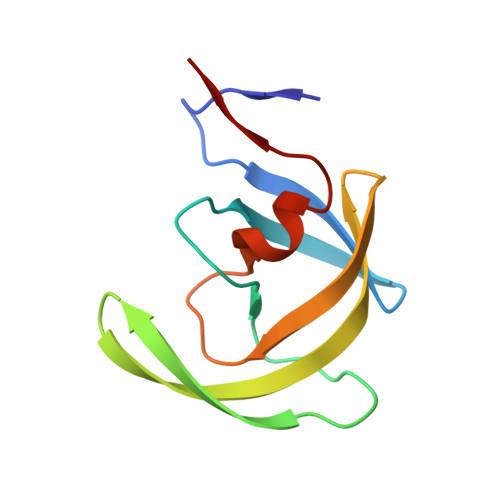Structure-Based Design, Synthesis, and Structure-Activity Relationship Studies of HIV-1 Protease Inhibitors Incorporating Phenyloxazolidinones.
Ali, A., Reddy, G.S., Nalam, M.N., Anjum, S.G., Cao, H., Schiffer, C.A., Rana, T.M.(2010) J Med Chem 53: 7699-7708
- PubMed: 20958050
- DOI: https://doi.org/10.1021/jm1008743
- Primary Citation of Related Structures:
3MXD, 3MXE - PubMed Abstract:
A series of new HIV-1 protease inhibitors with the hydroxyethylamine core and different phenyloxazolidinone P2 ligands were designed and synthesized. Variation of phenyl substitutions at the P2 and P2' moieties significantly affected the binding affinity and antiviral potency of the inhibitors. In general, compounds with 2- and 4-substituted phenyloxazolidinones at P2 exhibited lower binding affinities than 3-substituted analogues. Crystal structure analyses of ligand-enzyme complexes revealed different binding modes for 2- and 3-substituted P2 moieties in the protease S2 binding pocket, which may explain their different binding affinities. Several compounds with 3-substituted P2 moieties demonstrated picomolar binding affinity and low nanomolar antiviral potency against patient-derived viruses from HIV-1 clades A, B, and C, and most retained potency against drug-resistant viruses. Further optimization of these compounds using structure-based design may lead to the development of novel protease inhibitors with improved activity against drug-resistant strains of HIV-1.
Organizational Affiliation:
University of Massachusetts Medical School, Worcester, Massachusetts 01605, United States.

















